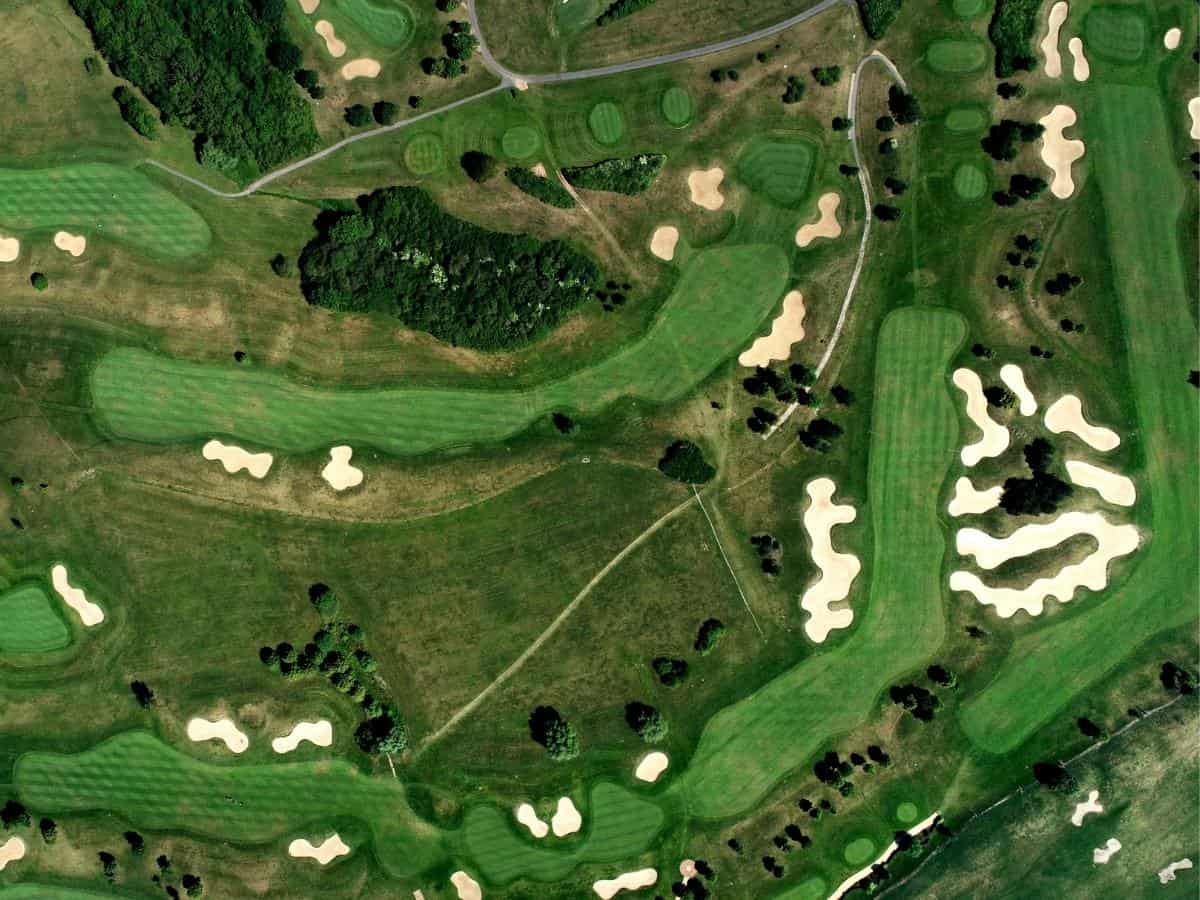How Often Do Golf Courses Move The Hole?
Changing hole locations on a golf course is part of the greenkeeper’s tasks, and along with the course director or manager, they decide where the next position will be to offer up a new variation on the hole for that day’s field.
Most golf courses will move the hole location on each green daily, but this is not a hard and fast practice as there may be times when the hole position stays the same for a few days when play is minimal. Moving the hole changes the playing dynamics of the hole and adds variety for the players.
Moving the hole on the green is not simply a question of creating a new hole, moving the cup, and covering the old one. Some regulations need to be followed and design factors that come into play when positioning holes on the greens – let’s explore those a little more.

Why Do Golf Courses Change The Hole Locations?
Golf courses change the hole locations to preserve the green conditions by preventing too much wear and tear and changing the hole’s character and difficulty for added variety and player satisfaction. Holes are also changed at heavily played courses to accommodate the pace of play.
Let’s look at three reasons influencing the frequency for changing hole locations:
- To preserve the green conditions and the grass. The hole position is changed to allow the grass to recover and for the hole itself to repair.
Leaving the hole in the same place for too long will create traffic on the green and around the hole. This includes elements like balls landing on the green in the vicinity and creating pitch marks and foot traffic as golfers walk around and near the hole.
- To change the difficulty and character of the hole itself for the players. Changing the hole position allows the greenkeeper to make the hole easier or more difficult and challenge the players on the day.
If the hole were always in the same place or the same place for a long period, it would become simple to play as it would always require the same shot on approach or off the tee for a par three.
It also means that on par 4’s and par 5’s, the golfer will need to change their approach and hole strategy, as we see with the tournaments on TV.
- To facilitate the pace of play. Busy golf courses may move hole positions when considering the speed of play. They will save easier hole positions for days when the course is extensively used to facilitate players moving onto the next hole more quickly.
On quieter days, and particularly as there are generally a small number of easy locations, holes will be located to move challenging spots.
Do Course Designers Plan For Different Hole Locations?
World-renowned course designer Jeff Brauer divides his greens into six different front, back, and middle quadrants and looks at 4-6 different hole locations per quadrant.
This gives him between 24 and 36 possible hole locations for each green, which opens up a good range of options and variations for each hole. With 18 holes on the course and around 30 pin placement options on each hole, that’s around 540 variations.
The hole variations give tournament directors a great variety for the playing field. It creates new challenges for the players as they now need to have four different strategies (assuming they cut) for each day for each hole.

How Are Holes On A Golf Course Changed?
The process of actually changing the hole is pretty straightforward. The rules of golf state that the hole must have a diameter of 4.25″ and must be at least 4″ deep. Do you want to know why golf courses have 18 holes? Check out this article, Why Golf Courses Have 18 Holes.
Using a hole cutter, the greenskeeper will push it into the ground to the selected depth and remove the chunk of turf that will create the new hole. He can smooth out the bottom before putting it in the cup.
The cup edge has to be at least 1″ below the putting surface, and often, spray paint is used around the edges to make the hole more easily visible to players. Once the cup is in, the flag will be inserted and checked to see that it stands straight up.
The greenskeeper will then take the chunk of turf removed from the new hole, release it from the hole cutter to refill the old hole, and allow it to repair itself slowly over a few days. The greenskeeper would poke a few holes around the filling, tamp it down by stepping on it, and add extra water.
The Rules Of Golf And Pin Placement
Did you know that a specific set of rules in golf govern the placement of holes on the green?
Rule 15-3 of golf determines that the main factor in deciding on pin placement is that the hole should be in a position where it will achieve a ‘fair result’ and that rule 15-3 (iii) advises that the hole should be placed at least four paces from the edge of the green.
If greenside bunkers are in play, the hole position should be more than four feet from the bunker’s edge.
Furthermore, this rule suggests that holes should not be placed in steep gradients where it would be impossible to stop the ball at the hole or where the ball will roll far past if the putt is missed.

There should also be a two-foot radius around the hole that is as level as possible and ‘be of uniform grade,’ and rule 15-3 (iv) states that there should be balance with placements on the left, right, center as well, as back and front of the greens.
Another rule that comes into play is rule 15-3 (vii), which views making the course and greens more difficult over consecutive days as ‘fallacious.’ This means that there is a mistaken belief that this practice should occur.
So if you find your club competitions’ hole positions becoming increasingly difficult over the tournament’s duration, you can cite rule 15-3 (vii) to your organizing committee!
The goal of the rules is not to limit the creative elements of pin placement but to reasonably challenge the players’ skills and provide the possibility of a fair result on each hole.
Let’s Wrap This Up!
When answering the question, “how often do golf courses move the hole?” a few factors are considered.
The placement of holes on a golf course is not simply a question of moving them but also a consideration of the day’s field and the weather conditions, as greens will hold better or worse depending on the weather.
Understanding why and how the holes on a golf course are moved will broaden your appreciation of the skills involved in managing a course and the science behind the course design. That can only make you a better golfer.
Related Posts You May Like:






